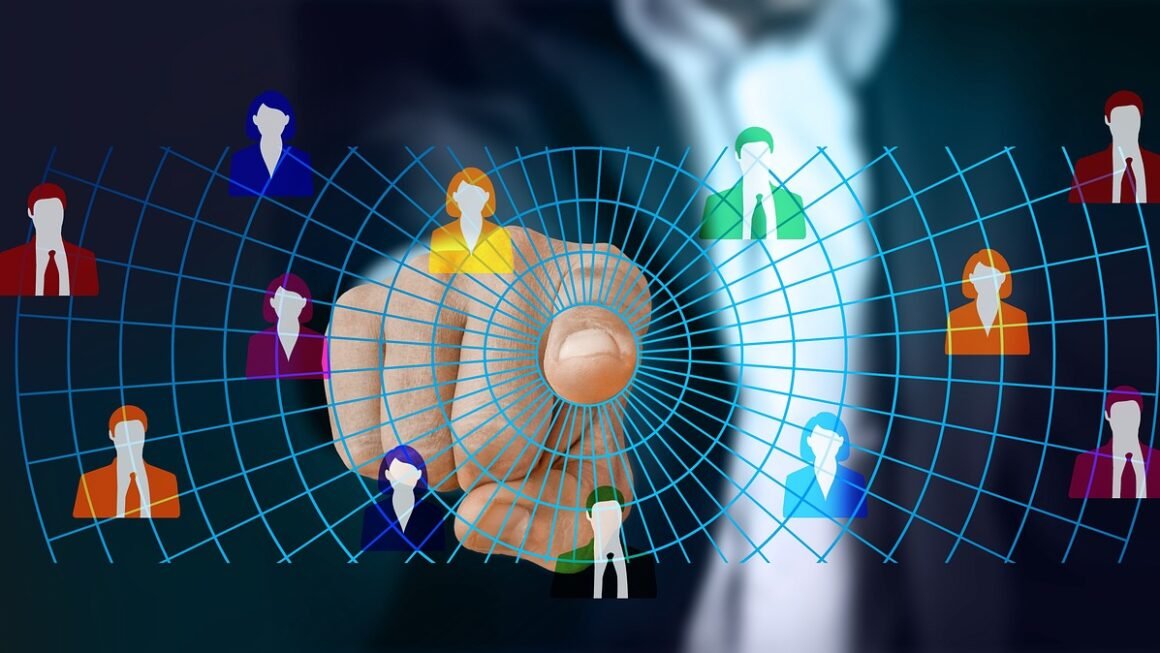Machine learning is no longer a futuristic concept relegated to science fiction. It’s a present-day reality transforming industries, from healthcare to finance to marketing. Understanding the fundamentals of machine learning and its vast potential is crucial for anyone looking to navigate the modern technological landscape. This guide provides a comprehensive overview of machine learning, exploring its core principles, practical applications, and future implications.
What is Machine Learning?
Defining Machine Learning
Machine learning (ML) is a subset of artificial intelligence (AI) that focuses on enabling computer systems to learn from data without being explicitly programmed. Instead of relying on predefined rules, ML algorithms identify patterns, make predictions, and improve their performance over time based on the data they are exposed to. This ability to learn and adapt makes machine learning a powerful tool for solving complex problems and automating tasks.
Key Components of Machine Learning
- Data: The foundation of any machine learning model. Data can be structured (e.g., tabular data in a database) or unstructured (e.g., images, text, audio).
- Algorithms: The mathematical functions that learn from the data. Different algorithms are suited for different types of problems.
- Training: The process of feeding data to an algorithm to learn patterns and relationships.
- Model: The trained algorithm, ready to make predictions or decisions on new data.
- Evaluation: The process of assessing the performance of the model using metrics appropriate to the task.
Types of Machine Learning
Machine learning algorithms can be broadly categorized into several types:
- Supervised Learning: Algorithms learn from labeled data, where the correct output is provided for each input. Examples include classification (predicting categories) and regression (predicting continuous values).
- Unsupervised Learning: Algorithms learn from unlabeled data, uncovering hidden patterns or structures. Examples include clustering (grouping similar data points) and dimensionality reduction (reducing the number of variables).
- Reinforcement Learning: Algorithms learn by interacting with an environment and receiving rewards or penalties for their actions. This is commonly used in robotics and game playing.
How Machine Learning Works: A Simplified Explanation
The Learning Process
The process of machine learning can be broken down into several key steps:
Example: Predicting Customer Churn with Supervised Learning
Let’s say a telecommunications company wants to predict which customers are likely to churn (cancel their service). They can use supervised learning to build a model that predicts churn based on customer data such as:
- Account age
- Monthly charges
- Call minutes used
- Customer service interactions
The algorithm would learn from historical data of customers who churned and those who didn’t, identifying patterns and relationships between these features and churn probability. Once trained, the model can be used to identify customers at risk of churning, allowing the company to proactively offer incentives to retain them.
Applications of Machine Learning Across Industries
Healthcare
Machine learning is revolutionizing healthcare in various ways:
- Diagnosis: ML algorithms can analyze medical images (X-rays, MRIs) to detect diseases like cancer at an early stage. For example, Google’s AI model can detect breast cancer from mammograms with greater accuracy than radiologists in some cases.
- Drug Discovery: ML can accelerate the drug discovery process by identifying promising drug candidates and predicting their effectiveness.
- Personalized Medicine: ML can tailor treatment plans to individual patients based on their genetic makeup, lifestyle, and medical history.
- Predictive Analytics: Predicting patient readmission rates or identifying patients at high risk of developing certain conditions.
Finance
The financial industry is leveraging machine learning for:
- Fraud Detection: Identifying fraudulent transactions in real-time.
- Risk Management: Assessing credit risk and predicting market volatility.
- Algorithmic Trading: Developing automated trading strategies.
- Customer Service: Providing personalized financial advice through chatbots.
Marketing and Sales
Machine learning is transforming marketing and sales efforts:
- Personalized Recommendations: Recommending products or services to customers based on their browsing history and purchase behavior. Amazon and Netflix are prime examples.
- Targeted Advertising: Delivering targeted ads to users based on their demographics, interests, and online activity.
- Lead Scoring: Prioritizing leads based on their likelihood of converting into customers.
- Customer Segmentation: Grouping customers into segments based on their characteristics and needs.
Manufacturing
Machine learning is improving efficiency and quality in manufacturing:
- Predictive Maintenance: Predicting when equipment is likely to fail, allowing for proactive maintenance and reducing downtime.
- Quality Control: Detecting defects in products during the manufacturing process.
- Process Optimization: Optimizing manufacturing processes to improve efficiency and reduce waste.
The Future of Machine Learning: Trends and Challenges
Emerging Trends
- Explainable AI (XAI): Making ML models more transparent and understandable, allowing users to understand why a model makes a particular prediction.
- Federated Learning: Training ML models on decentralized data sources without sharing the data itself, preserving privacy and security.
- AutoML: Automating the process of building and deploying ML models, making ML more accessible to non-experts.
- Edge Computing: Running ML models on devices at the edge of the network (e.g., smartphones, sensors), reducing latency and improving privacy.
Challenges
- Data Bias: ML models can perpetuate and amplify biases present in the data they are trained on.
- Lack of Interpretability: Some ML models (e.g., deep neural networks) are difficult to interpret, making it challenging to understand their decision-making process.
- Data Privacy: Protecting the privacy of individuals when using their data to train ML models.
- Ethical Considerations: Addressing the ethical implications of ML, such as job displacement and algorithmic discrimination.
Conclusion
Machine learning is a powerful and rapidly evolving technology that is transforming industries across the board. By understanding the core concepts, exploring practical applications, and staying informed about emerging trends and challenges, you can leverage the potential of machine learning to solve complex problems, automate tasks, and drive innovation. Embracing continuous learning and ethical considerations will be essential as machine learning becomes increasingly integrated into our lives.



